

Dorset, a county steeped in history and natural beauty, located on the southwestern coast of England, is home to some of the most fascinating castles in the British Isles. These castles, with their centuries-old stones, stand as testament to the turbulent and often violent history of the region. From the early days of the Norman conquest to the complexities of medieval England, Dorset’s castles have played pivotal roles in defense, power struggles, and the social life of their times.
Visitors to Dorset are greeted with the majestic silhouettes of these historical fortifications, each telling its own story of bravery, betrayal, and transformation. Whether it’s the iconic ruins of Corfe Castle, standing proudly atop a hill, the strategic coastal fortress of Portland Castle, or the elegant Sherborne Old Castle, Dorset offers a journey through time, showcasing the architectural prowess and historical depth of England’s past.
This blog aims to explore these captivating structures, delving into their histories, architectural features, and the legends that haunt their halls. We’ll walk through the remnants of battles fought, peek into the lives of the people who lived within these walls, and uncover the efforts to preserve these monuments for future generations. Join us on this historical journey, as we uncover the secrets and stories of Dorset’s most remarkable castles.
History of Castles in Dorset
The story of Dorset’s castles is deeply intertwined with the broader narrative of England’s medieval past. From the early days following the Norman Conquest in 1066, the English landscape began to change dramatically, with the construction of castles emerging as a powerful symbol of Norman authority and control. Dorset, with its strategic importance and fertile lands, became a focal point for such fortifications, which were initially built to secure the conquest’s gains and suppress local dissent.
The Norman Influence
The Normans introduced the motte-and-bailey design to England, a type of fortification with a wooden or stone keep situated on a raised earthwork called a motte, accompanied by an enclosed courtyard or bailey. Corfe Castle, one of Dorset’s most iconic structures, began its life as one such fortification. Its strategic location on a hill allowed it to control a gap in the Purbeck Hills, serving as a key defensive and administrative center.
Medieval Fortifications
As the medieval period progressed, the nature and function of castles in Dorset evolved. The 12th and 13th centuries saw the transformation of many wooden motte-and-bailey castles into stone fortresses, a response to both technological advancements in siege warfare and the desire for more durable and prestigious structures. Sherborne Old Castle, with its impressive stone ruins, exemplifies this transition, reflecting the increasing sophistication of military architecture and the growing power of English nobility.
Castles and Power
Throughout the medieval era, Dorset’s castles were not just military bulwarks but also centers of administration and symbols of feudal power. They played pivotal roles in the political machinations and conflicts of the time, including the Anarchy of the 12th century and the English Civil War in the 17th century. The castles were often held by powerful families, whose loyalties and rivalries shaped the local and national landscape.
The Civil War and Decline
The English Civil War marked a turning point for many of Dorset’s castles. Structures like Corfe Castle suffered significant damage during the sieges, leading to their eventual abandonment or deliberate destruction to prevent their use in future conflicts. The war signified the end of the castle’s role as a military stronghold, with subsequent centuries seeing many of them falling into ruin or being adapted for other uses.
Exploring Dorset’s Castles
With this historical backdrop in mind, let’s delve into the individual stories of some of Dorset’s most significant castles, starting with Corfe Castle.
Corfe Castle
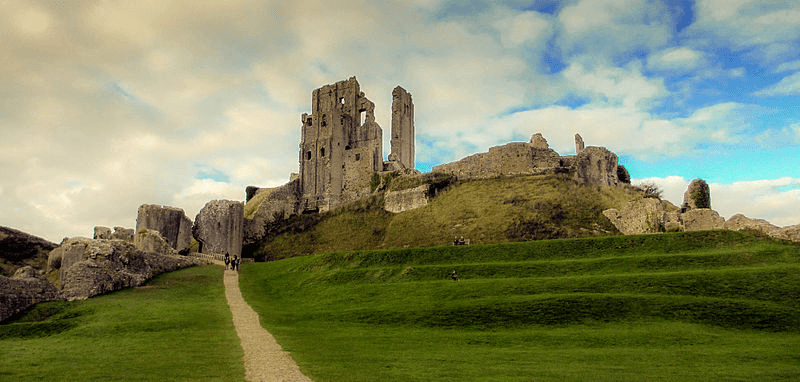
- Brief History: Standing as a testament to medieval England’s tumultuous history, Corfe Castle’s ruins evoke a sense of awe and mystery. Founded by William the Conqueror in the 11th century, this iconic fortress has witnessed numerous historical events, including the dramatic episode of 978 when Edward the Martyr was assassinated at the site. The castle played a pivotal role during the English Civil War, suffering a siege that led to its deliberate destruction in 1646 to prevent its use by Royalist forces.
- Architectural Highlights: Despite its ruins, Corfe Castle showcases the remnants of its once-imposing structure. Its unique position on a natural hill allows visitors to appreciate the strategic importance of its location. The surviving gatehouses and the jagged outline of its walls against the sky are particularly striking, offering a glimpse into medieval defensive architecture.
- Visitor Information: Today, Corfe Castle welcomes visitors who can explore its ruins and enjoy breathtaking views of the surrounding Dorset countryside. Managed by the National Trust, it offers a range of activities, from historical reenactments to family trails, making it a dynamic site of cultural heritage.
Highcliffe Castle
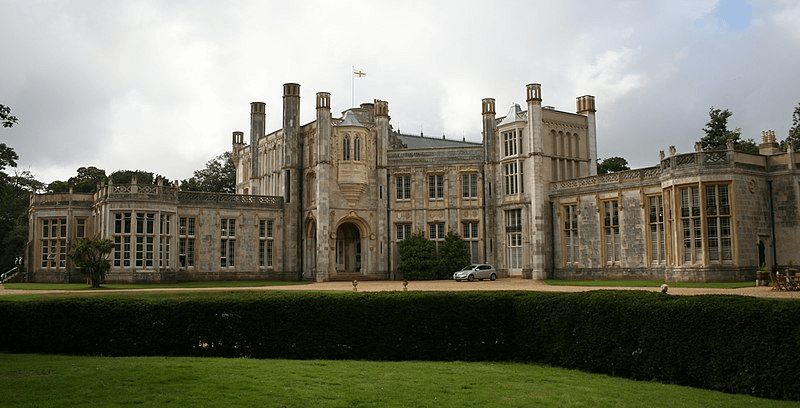
- Brief History: Highcliffe Castle, a picturesque example of Romantic and Gothic revival architecture, was constructed in the early 19th century. It was built by Lord Stuart de Rothesay, incorporating medieval French masonry in its design. The castle has seen various phases of use, from a private residence to a seminary, and it even played host to famous figures such as Harry Gordon Selfridge.
- Architectural Highlights: The castle’s design features intricate carvings, stunning stained glass, and a remarkable façade made of Bath stone. Its interiors, partially restored, showcase the grandeur of its heyday, with ornate fireplaces and elegant rooms that hint at its past luxury.
- Visitor Information: Highcliffe Castle is now a heritage attraction that offers guided tours, exhibits, and events throughout the year. Its cliff-top location provides stunning sea views, and its restored gardens offer peaceful walks. The castle also serves as a venue for weddings and cultural events, blending its historical ambiance with contemporary use.
Lulworth Castle
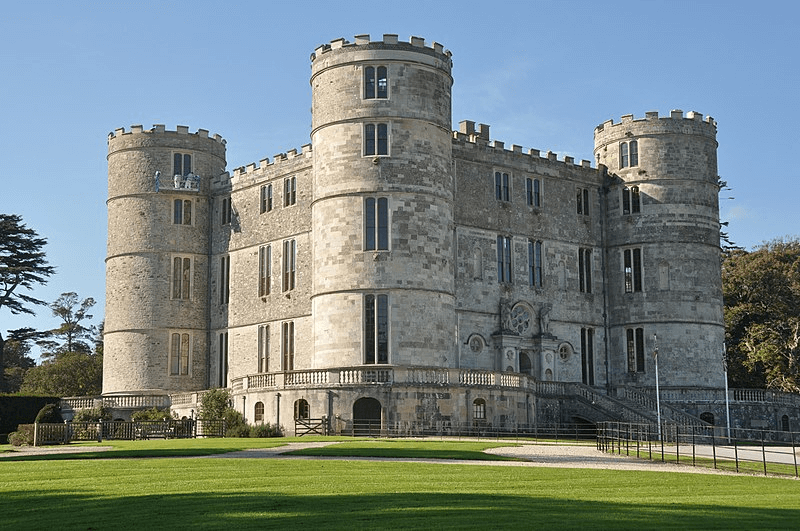
- Brief History: Built in the early 17th century as a hunting lodge by Thomas Howard, 3rd Viscount Bindon, Lulworth Castle represents the mock castle style of architecture. It has undergone various modifications over the centuries, including a significant restoration after a devastating fire in 1929.
- Architectural Highlights: The castle’s exterior retains its original castle-like appearance, with four round towers and a central keep. Inside, the restoration efforts have preserved the sense of grandeur, with exhibits detailing the castle’s history and its role within the Lulworth Estate.
- Visitor Information: Lulworth Castle is open to the public, offering insights into its history and architecture. Visitors can also enjoy the extensive parkland, which hosts events, including the annual Camp Bestival music festival. The nearby Lulworth Cove and Durdle Door offer natural beauty, making the castle a perfect starting point for exploring Dorset’s Jurassic Coast.
Photo Author Nilfanion
Portland Castle
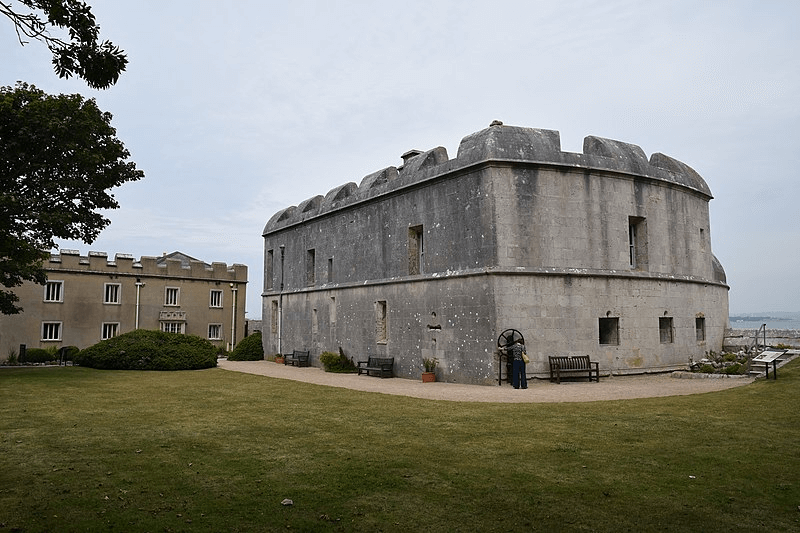
- Brief History: Constructed in the early 16th century by Henry VIII, Portland Castle was part of a series of coastal forts built to defend against French and Spanish invasions. Throughout its history, it served various military roles, including during the English Civil War and World War II.
- Architectural Highlights: Portland Castle is a fine example of a Henrician castle, featuring a round gun tower, thick walls, and gun ports designed for early artillery. Its domestic quarters offer a rare glimpse into the living conditions of its garrison.
- Visitor Information: Managed by English Heritage, Portland Castle provides a historical journey into Tudor military architecture. Visitors can explore the gun platforms, enjoy the Tudor garden, and take in views of Portland Harbour. Interactive exhibits and audio tours enhance the experience, making it accessible for all ages.
Photo Author hugh llewelyn
Sherborne Castle
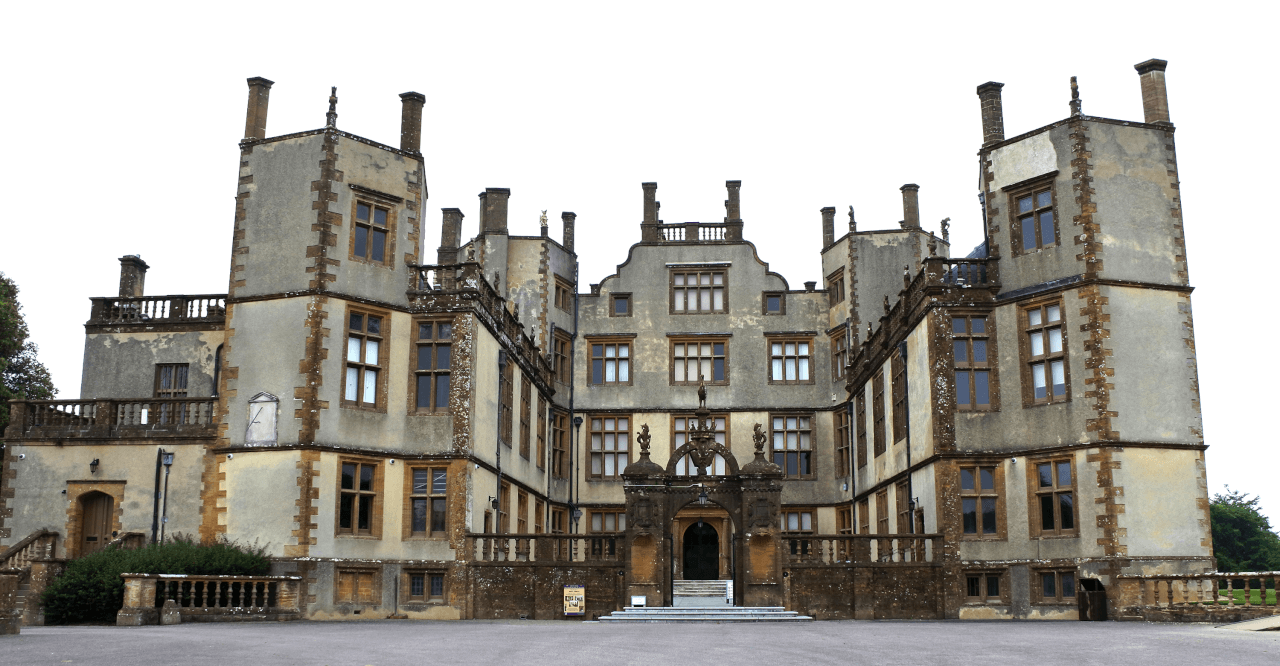
- Brief History: Originally built in the 12th century as a bishop’s palace, Sherborne Castle was acquired by Sir Walter Raleigh in 1594, who constructed a new residence within its grounds. The Digby family, current owners since 1617, have added to its rich history, with the castle surviving through the Civil War and into the modern era.
- Architectural Highlights: The castle boasts stunning interiors, with collections of art, furniture, and historical artifacts. The Capability Brown-designed gardens are a highlight, featuring lakes, follies, and landscaped vistas that are considered masterpieces of English garden design.
- Visitor Information: Sherborne Castle welcomes visitors to explore its house and gardens. The estate hosts events, including classic car rallies and craft fairs, offering a blend of historical exploration and contemporary enjoyment. The gardens, in particular, are a must-see for their beauty and historical significance.
Brownsea Castle
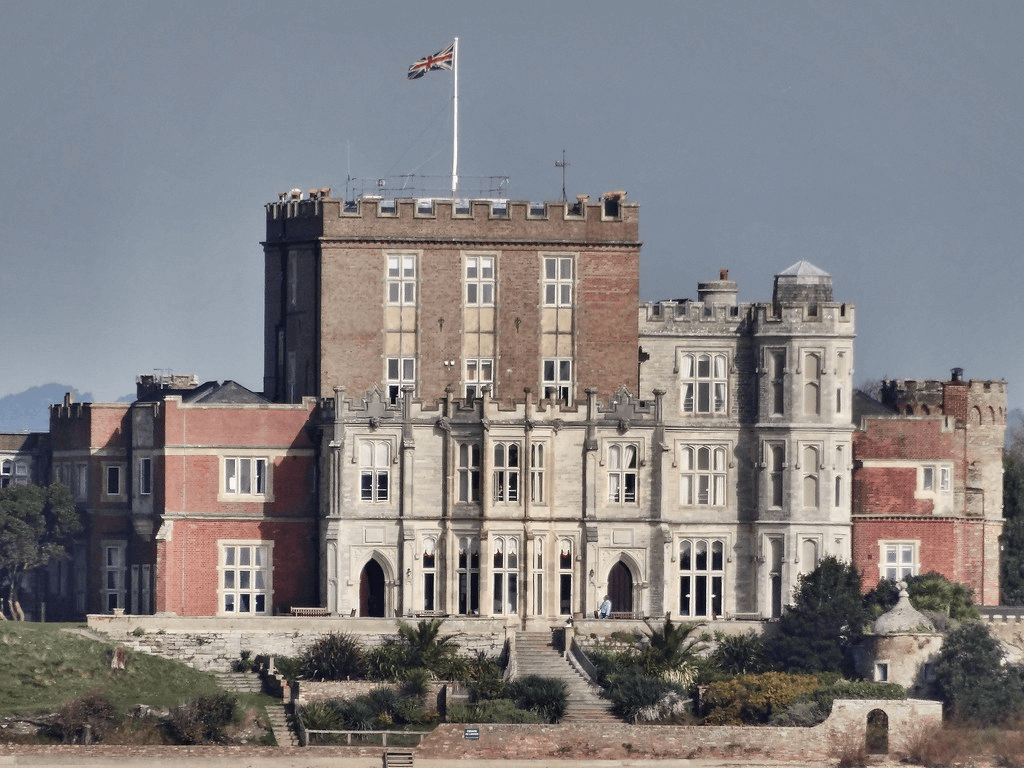
- Brief History: Located on Brownsea Island in Poole Harbour, the original castle was constructed in the mid-16th century as part of Henry VIII’s coastal defences. It has been rebuilt and modified over the centuries, serving various roles from a private residence to a pottery factory.
- Architectural Highlights: Although not open to the general public, the castle can be viewed from various points on Brownsea Island. Its current incarnation, owned by the National Trust, is leased as a private holiday accommodation but contributes to the island’s rich tapestry of wildlife and history.
- Visitor Information: While the castle itself is not accessible, Brownsea Island offers a wealth of natural and historical attractions. Visitors can explore the island’s diverse habitats, from woodlands to heathlands, and observe wildlife, including the rare red squirrel. The island’s association with the scouting movement and its scenic walking trails make it a unique destination.
Sandsfoot Castle
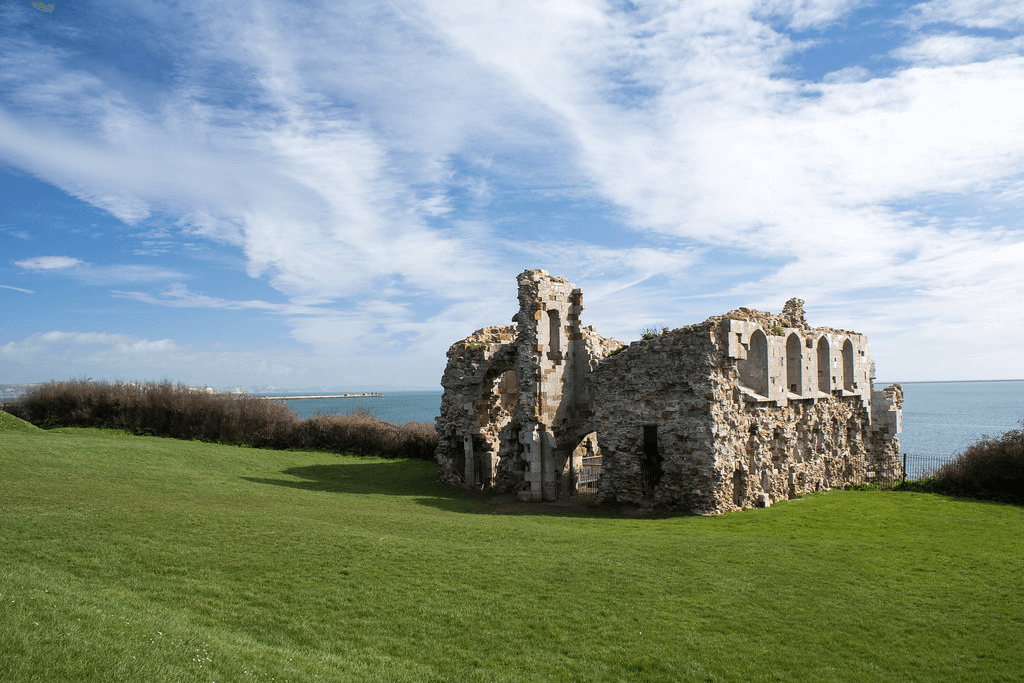
- Brief History: Another of Henry VIII’s coastal fortresses, Sandsfoot Castle, was built in the 1530s to protect against French and Spanish invasions. Over the centuries, erosion and neglect led to its ruin, with much of the structure now collapsed into the sea.
- Architectural Highlights: The remaining ruins offer a poignant glimpse into Tudor military architecture, with parts of the walls and gun ports still visible. The castle’s location offers stunning views of Weymouth Bay and Portland Harbour, emphasizing its strategic importance.
- Visitor Information: Sandsfoot Castle and the adjacent gardens are open to the public, providing a peaceful spot for picnics and relaxation. Interpretive panels give insights into its history, and the nearby Rodwell Trail offers a scenic walk connecting Weymouth to Portland.
Christchurch Castle
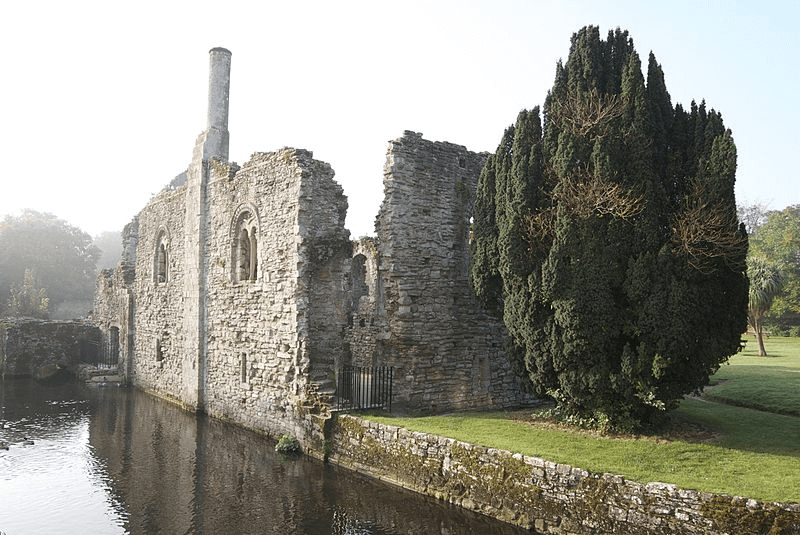
- Brief History: This Norman castle, with origins dating back to the 11th century, played a role in the power struggles of medieval England. Its motte and bailey design was typical of the period, serving as a fortress and administrative center.
- Architectural Highlights: The ruins of Christchurch Castle include the impressive Norman keep and the remains of the domestic quarters. The keep offers an example of early Norman military architecture, with its layout providing insights into the castle’s defensive capabilities.
- Visitor Information: Located in the heart of Christchurch, the castle ruins are freely accessible to visitors. The adjacent Norman House, one of the oldest buildings in Christchurch, adds to the historical exploration, with the nearby Priory Church and its gardens offering further historical and architectural interest.
Photo Author Nick Lansley from London, United Kingdom
Rufus Castle
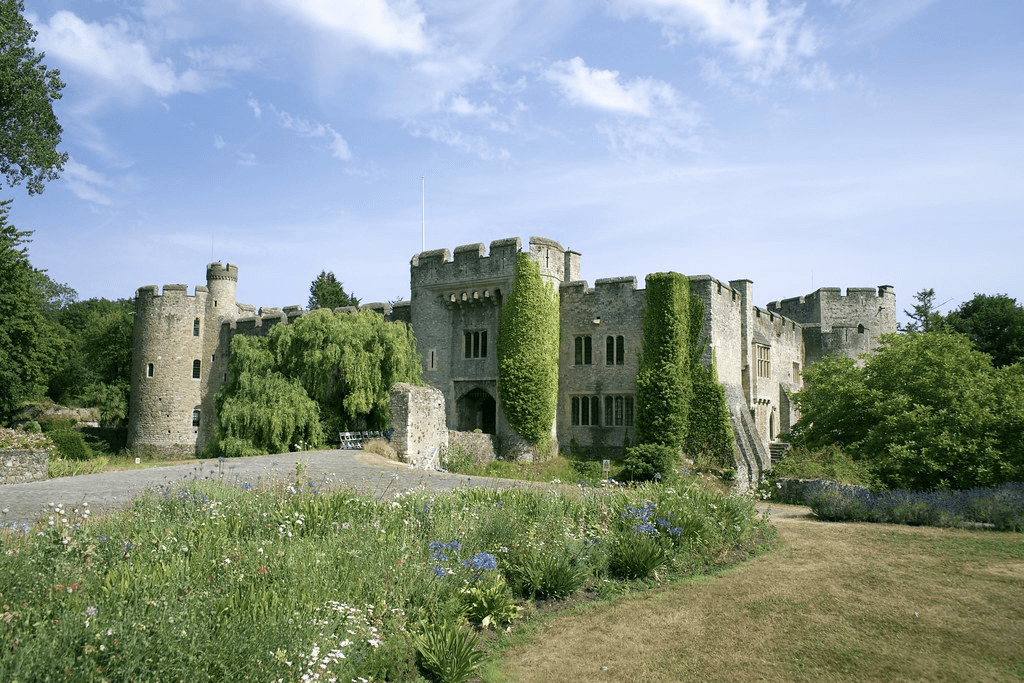
- Brief History: Also known as Bow and Arrow Castle, Rufus Castle on Portland is thought to date back to the Norman period, with significant rebuilding in the 15th century. Its name is associated with William II, known as Rufus, although direct connections are speculative.
- Architectural Highlights: Situated on the Isle of Portland, Rufus Castle’s remnants are perched dramatically on the cliff edge, offering striking sea views. Its surviving sections, including parts of the keep and walls, showcase the adaptability of medieval fortifications to their rugged coastal environment.
- Visitor Information: Rufus Castle is located on private land but can be viewed from the coastal path, offering a picturesque stop for walkers exploring Portland’s unique landscape. The area’s rich history and natural beauty make it a compelling destination for history enthusiasts and nature lovers alike.
Pennsylvania Castle
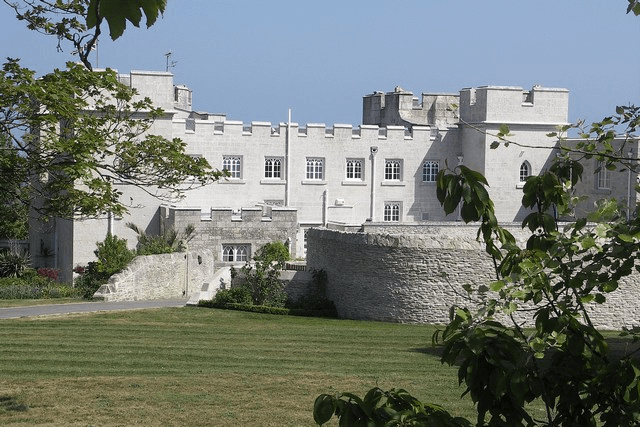
- Brief History: Pennsylvania Castle, also known as Penn Castle, is a relatively modern structure, built in 1800 for John Penn, Governor of Portland and grandson of William Penn, founder of Pennsylvania, USA. Its Gothic revival style stands out against the rugged backdrop of Portland.
- Architectural Highlights: The castle’s private gardens and stunning views over Church Ope Cove add to its allure, with its architecture blending elements of medieval castles with the comfort and elegance of a 19th-century residence.
- Visitor Information: As a private estate, Pennsylvania Castle is now used primarily as a venue for weddings and events. While not generally open for public tours, its external beauty and setting can be appreciated as part of the broader exploration of Portland’s historical and natural landscape.
Photo Attribution: Mike Smith / Pennsylvania Castle / CC BY-SA 2.0
The Legacy and Preservation of Castles in Dorset
The castles of Dorset are more than just stone and mortar; they are living monuments to England’s history, embodying centuries of architectural evolution, social change, and historical events. The efforts to preserve these structures are not just about maintaining the physical remnants but also about safeguarding the stories and heritage they represent.
Efforts to Preserve and Maintain: Organizations like English Heritage and the National Trust, along with private owners, have been instrumental in the conservation of Dorset’s castles. Through restoration projects, archaeological research, and public engagement, these entities work to ensure that future generations can explore and learn from these historic sites.
Role of Heritage Organizations: Heritage organizations play a crucial role in balancing the needs for preservation with making the castles accessible to the public. They provide educational programs, manage visitor facilities, and conduct conservation work, all aimed at keeping the history of these castles alive.
Contribution to Dorset’s Identity and Tourism: Dorset’s castles contribute significantly to the county’s identity, offering unique insights into England’s past. They are a vital part of the region’s tourism industry, attracting visitors from around the world. Through tours, events, and educational programs, these castles continue to teach, inspire, and entertain.
Conclusion
Dorset’s castles stand as testaments to the county’s rich historical tapestry, from the Norman Conquest to the present day. Each castle, with its unique story and architectural features, offers a window into the past, inviting visitors to step back in time and explore England’s feudal history, military strategies, and cultural shifts.
As we conclude this journey through Dorset’s castles, it’s clear that these structures are more than remnants of the past; they are vibrant parts of England’s heritage, offering lessons in history, architecture, and the enduring human spirit. Whether you’re a history enthusiast, a traveler seeking to explore England’s cultural depth, or someone fascinated by the tales of yore, Dorset’s castles provide a rich, immersive experience.
We encourage everyone to visit these historical monuments, to walk the halls where history was made, and to support the ongoing efforts to preserve these invaluable links to our past. Dorset’s castles are not just stone structures; they are stories, waiting to be told.

